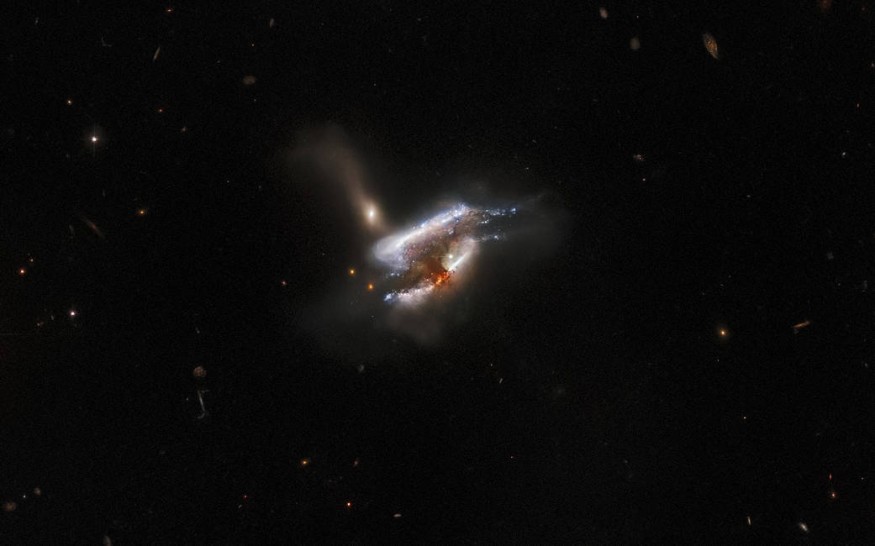NASA Hubble Space Telescope captures a gorgeous image of three galaxies merging into one. The merger takes place 681 million light-years away from Earth.

NASA Hubble Space Telescope Captures Merging Galaxy
A galaxy merger known as IC 2431 is depicted in the image above. It's in the Cancer constellation and is around 681 million light-years away from Earth.
This isn't just a single galaxy, as the word 'galaxy merger' implies. It isn't even a merger of two galaxies! Instead, NASA classified IC 2431 as a "triple galaxy merger."
To put it another way, these are three separate galaxies that have collided and are now merging into one.
A galactic merger isn't the only thing going on here, though. According to NASA, the gravitational interactions of this galactic trio generate a "tumultuous mixture of star production and tidal distortions."
The dense dust cloud in the photo's center is also pointed out by NASA, although it's explained that light from a "background galaxy" is penetrating its outer extremities.
Phys.org said asronomers discovered the merger owing to Galaxy Zoo, a citizen science project that enlisted the help of over 100,000 people to identify photos of 900,000 galaxies collected by the Hubble observatory but never extensively investigated.
According to NASA, the crowdsourced project completed in 175 days what astronomers would have taken years to accomplish, and the endeavor has already resulted in several weird and interesting discoveries, like this one.
Galaxy Merger Explained
A triple galaxy merger, sometimes known as a comic crash, occurs when the gravitational forces of three galaxies slowly drag them closer together and tear them apart.
These kind of mergers are ubiquitous across the universe, and all huge galaxies owe their size to violent mergers like this one, including our own Milky Way.
Live Science said mergers like these are more about creation than destruction as chaotic as they appear.
As gas from the three adjacent galaxies collides and condenses, a large sea of material is created at the core of the newly unified galaxy, from which new stars will emerge.
Existing stars, on the other hand, will mostly escape the collision; while the gravitational tug-of-war between the three galaxies would alter the orbital paths of many existing stars, there is so much space between them that only a few of them are likely to meet.
Hubble Space Telescope
In its 30+ years of operation, NASA's Hubble Space Telescope has seen a lot. ScreenRant said this optical equipment found many astronomical secrets such as: exoplanets, blazing bright stars, and billions of additional galaxies scattered throughout the universe.
Hubble was founded in April 1990 and has amassed quite a portfolio over the years. It has aided scientists in determining the age of the cosmos, gaining a better understanding of dark matter, and providing crucial Pluto data.
With Hubble likely to remain operating for the foreseeable future - and the James Webb telescope set to begin its exploratory mission this summer - discoveries like this will only improve.
RELATED ARTICLE : What's Your Birthday Astronomy Image? Here's What NASA's Hubble Space Telescope Captured On Your Special Day
Check out more news and information on Space in Science Times.











